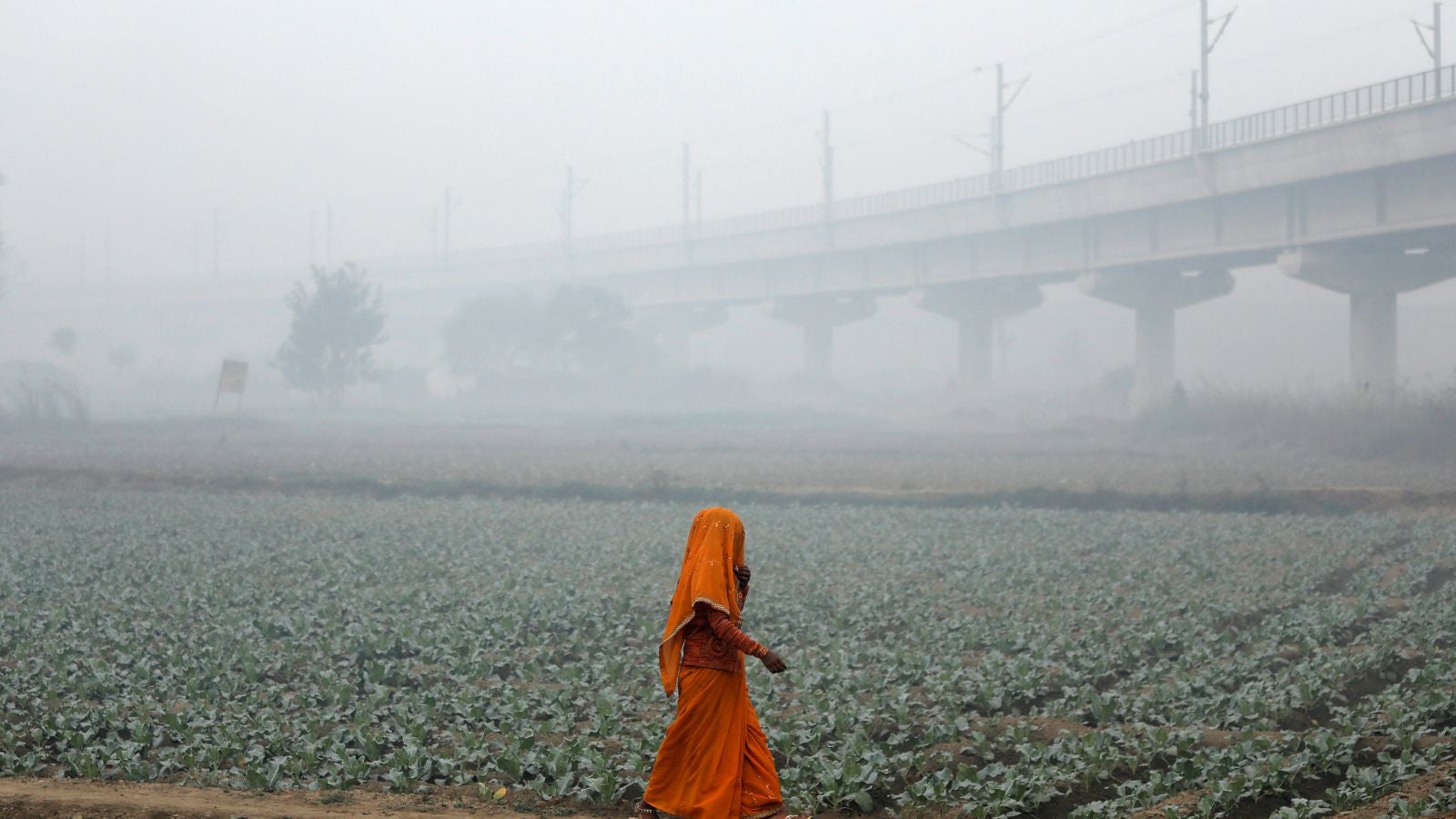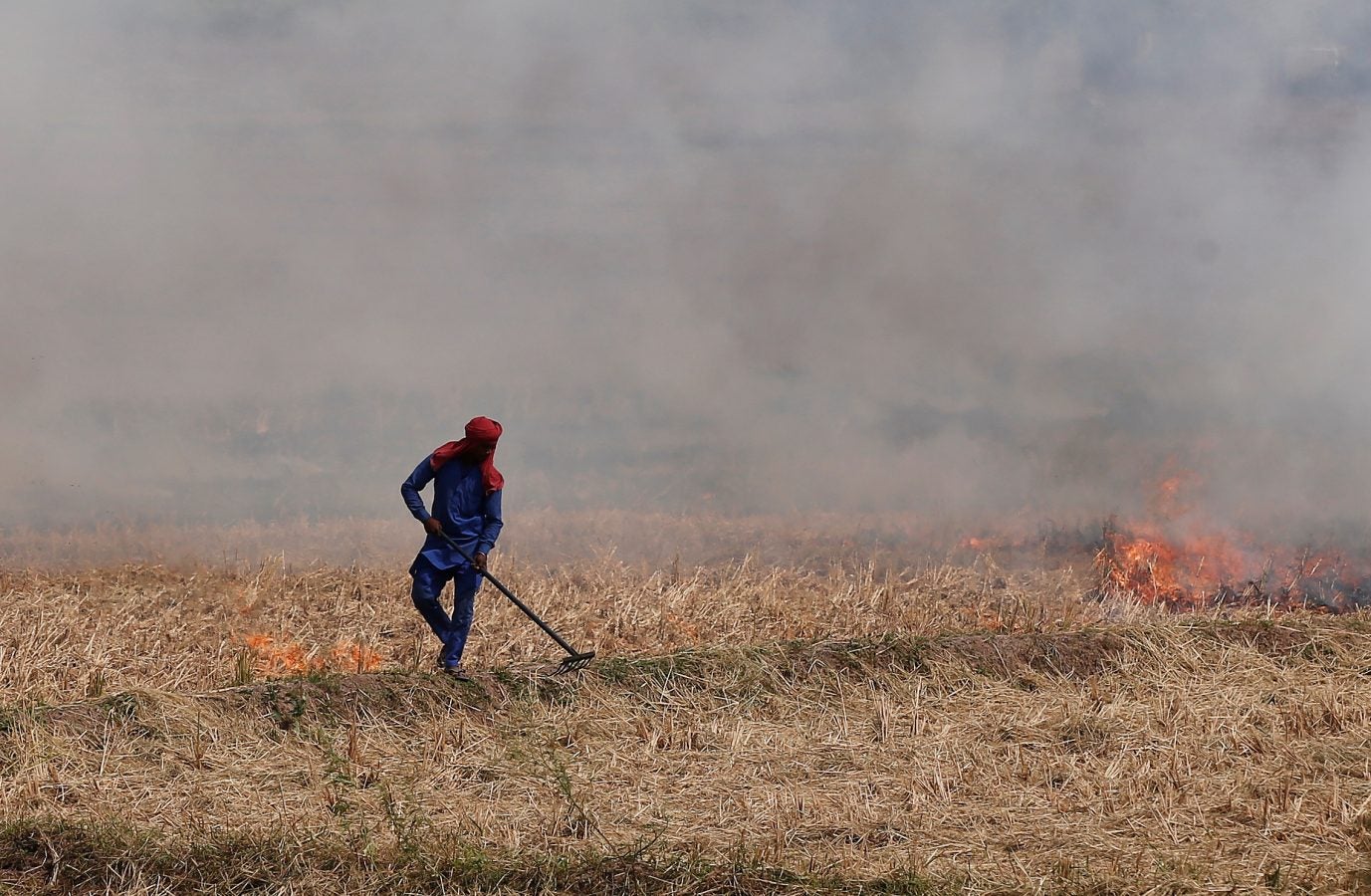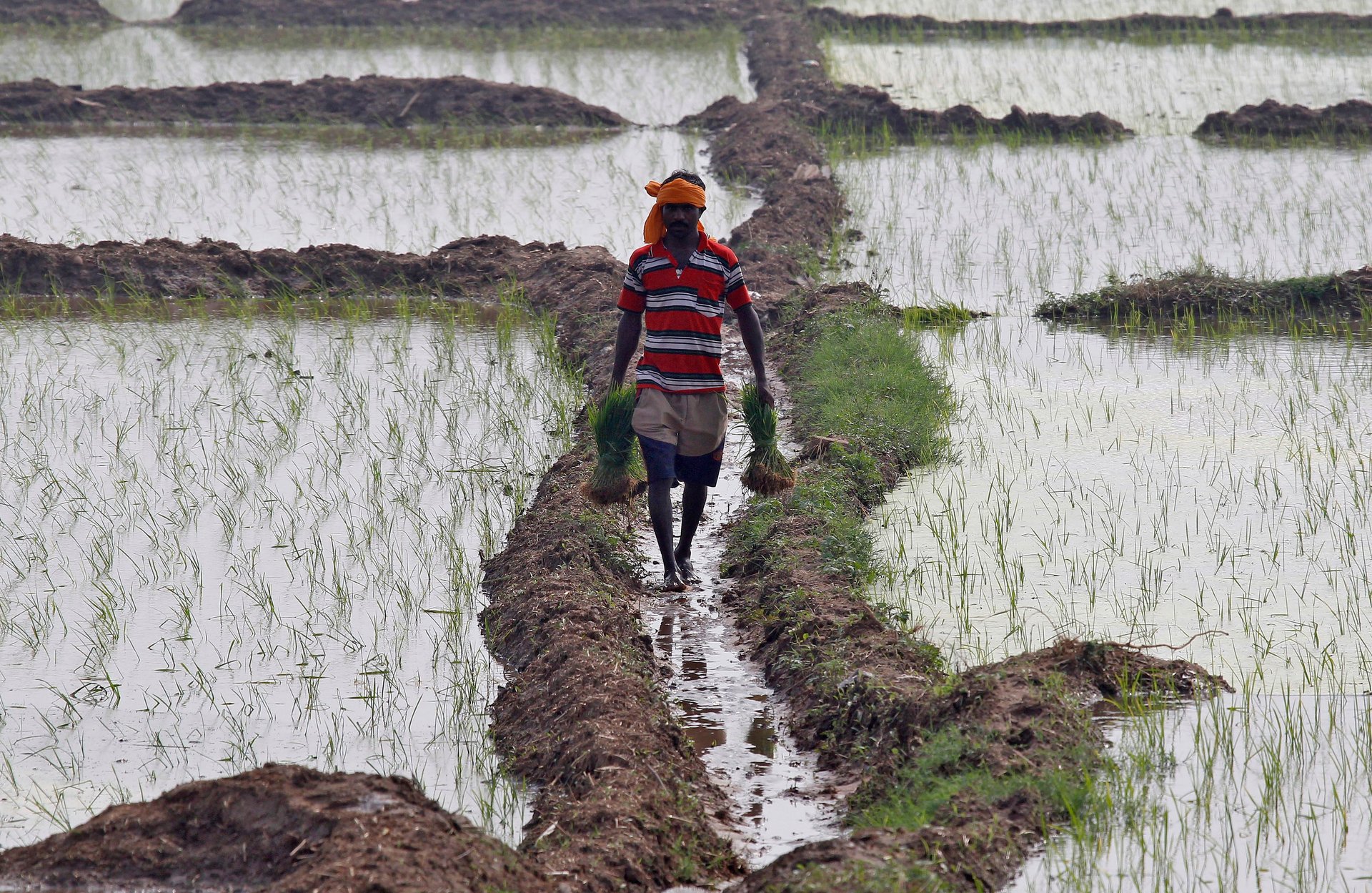A solution to Delhi’s apocalyptic winters might just be in sight
The climate talks in Madrid may have failed to achieve much, but a solution to the Indian capital’s apocalyptic winters might just be in sight, with a little help from the industry.


The climate talks in Madrid may have failed to achieve much, but a solution to the Indian capital’s apocalyptic winters might just be in sight, with a little help from the industry.
Every year in November, northern India chokes inside a thick blanket of smog, precipitated by record-level pollution. While fossil fuel-based power plants and vehicles are the major scourges in other countries, or even other Indian cities, Delhi’s problem lies a few hundred kilometres northwest: the agricultural fields of Punjab and Haryana.
Every year in late September and October, Indian farmers in those states set fire to straw stubble following the harvest of grains like paddy and wheat. Laws banning the practice nothwithstanding, this is the most cost-effective way of getting rid of the leftover crop ahead of the next sowing season.

However, for some time now, an Indian industry body has been forging alternative straw management techniques like mulching and recycling of straw.
As a part of its “Cleaner Air-Better Life” initiative, the Confederation of Indian Industry (CII) is working in villages of Punjab and Haryana to enable and popularise these practices and ensure zero crop residue burning. It has provided machinery and technical training to farmers and installed air quality monitors to measure the impact of reduced stubble burning.
Besides reduced air pollution, irrigation requirements, and usage of chemicals, these experiments have improved farm ecology and soil health in these areas.
The journey to this solution has not been straightforward, though.
Finding a solution
Two years ago, when a CII team visited Punjab’s paddy and wheat fields to study the issue, they had a single agenda: Talk about how stubble burning degrades the environment.
This involved 19 villages and 16,000 acres of farmland, engaging over 3,000 farmers.
However, it quickly realised it had to change the lens. From viewing the problem as one caused by farmers, they shifted to talking about how burning stubble reduces soil nutrients and affects productivity.

The team also realised that there’s no one-size-fits-all solution.
It would have to present a variety of options, and the farmer would have the right to choose because he knows what works best for him.
The team “discussed these issues with the farmers and came up with a shared economy model as an alternative to burning,” says CII’s Kuldeep Senger.
This year, the organisation’s crop residue management initiative has helped farmers in over 100 villages in six districts in Punjab and Haryana find an alternative to stubble burning. The latest data show that of the 15,000 acres where sowing was completed, over 90% has been free of burning.
The dominant practice they have applied is mulching. “We’re also helping them put the straw back into the soil, which is the alternate practice to burning, using certain technologies,” explains Seema Arora, deputy director-general at CII.
In mulching, the crop stubble is first cut and collected. The small pieces are then spread over the soil. While burning stubble removes crucial nutrients from the soil, mulching avoids that. It helps increase soil fertility and yield.
However, this requires a behavioural shift on part of the farmers.
“When you mulch the straw, the amount of water you put in drastically reduces,” Arora says. Water is a critical issue. Rising temperatures have affected precipitation, disrupting the availability of water. “This is why climate-smart agriculture is very important.”
CII has created an ecosystem that engages varied stakeholders: experts, corporates, state governments, and farmer groups. Most farmers have about 2.5 acres of land on average and lack the capacity to acquire machines. As part of the CII’s model, a range of subsidised machinery is provided to farmers, including happy seeders, zero tills, mulchers, and rotavators.
As part of their on-ground research, Senger spoke to the community as a whole. “We got villagers, gurudwaras, panchayat, and cooperatives together on one platform. We also worked with the Punjab Agriculture University faculty and started technical training programmes.”
The team created a pool of volunteers to launch a mass awareness drive. “We began giving them positive messaging, explaining the positive impacts of not burning stubble. There were rallies and positive announcements and we saw the whole community coming together for a common cause,” Senger says.
A farmer from Haryana’s Fatehabad district says that in the past two years, he hasn’t burnt any stubble. He was initially using happy seeder, but it didn’t work on the stubble resulting from the kind of wheat that he sows. “In different farms in different places, there are a variety of problems,” he says. So the farmer switched to using bailer. This year, 60% of the stubble has been removed and 40% is being mulched in the areas under the pilot project. The collected stubble was sent to bordering Rajasthan to be used as cattle feed.
According to Tara Singh, a farmer in Punjab’s Patiala, mulching the stubble instead of burning it has helped reduce weeds, particularly the dominant gullidanda. This, he says, has cut down the spraying of weedicide by 70%. However, he adds, the lack of adequate machinery remains a problem.
Why this project is important
Toxic air is cutting the life expectancy of Indian residents short by 5.3 years, on average.
This year, not unlike the last several, dangerous levels of pollution in the capital led authorities to declare a public health emergency and prompted responses such as halting construction activities and putting traffic control measures.
Although very much welcome, these are only short-lived solutions. As recently as in early December, the air quality in Delhi-NCR remained at “very poor” level with the air quality index (AQI) crossing 300 (“good” AQI is between 0 and 50).
Early last month, the share of stubble burning in Delhi’s pollution reached 46%, according to the Indian government and toxins climbed to 50 times the levels deemed healthy.
The obvious response to this deadly problem has been to blame it on the farmers, and educating them about the harmful impact of stubble burning appears to be the likely solution.
Besides causing health problems, air pollution due to stubble burning has economic costs as well. As per a report, it’s costing India $30 billion annually. While it’s an openly recognised issue in India’s agricultural belt, not enough has been done to address it.
What next?
Arora explains that CII is also exploring other solutions, but they have to meet certain criteria. “They need to be environmentally sound, affordable, cost effective, scalable, and replicable,” she says. “We’re trying to create a value chain to ensure that field-to-end-use can be done.”
Another crucial criterion is economic viability. “Until it becomes more valuable for farmers to not burn the stubble, they will continue doing so,” according to CII’s Ashish Agarwal.
Biodiesel is another option, he says, adding: “In a sense, we don’t have an implementable solution right now, but experiments are ongoing.”